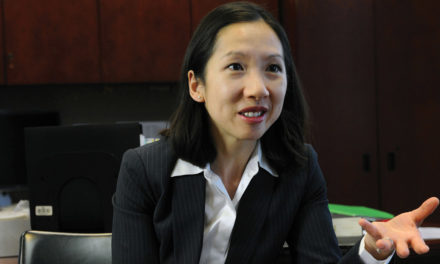A new study details the specific ways the bonds that hold our society together have been perforated
A remarkably important (and mostly-ignored) report by earl the Joint Economic Committee (JEC)—a bipartisan group comprised of U.S. House and Senate members—was issued earlier this year. This report takes a penetrating and sophisticated look into four areas of American life—families, communities, employment and faith.
The JEC report objectively and fairly assesses the relative strengths and weaknesses of each sector, jointly called “social capital” in the report.
Economist Robert Samuelson writes that “social capital is an obscure academic term that essentially signifies the ability of people to work and play together—to cooperate and connect with others. The stronger a society’s social capital, the less isolated and powerless people feel. The news here is cautionary; our social capital is depleting.”
The JEC report should be mandatory reading for any American who feels strongly about the future cohesiveness of marriage, family and parenting; about the relative strengths or weaknesses of our religious commitments as a nation; about what is actually happening in America’s work places; and about our civic and social life across thousands of communities nationwide.
This report and other recent studies, get to the heart of what is happening in the cultural and social DNA of the United States and transcends presidential politics of either party.
The Impact of Out-of-Wedlock Births
For instance, the report uses data to illustrate the upward trajectory of illegitimate births and the downward trajectory of marriage. The most recent out-of-wedlock-birth and single-parent numbers are startling: More than one-third of all kids in the United States are being raised either by a single mom or dad, or by no parent at all.
That is particularly astonishing when you consider that as recently as 1970, only 15 percent of American babies were born outside of marriage. Over that same time period, the rate of births to unmarried women has climbed from 10 percent to a whopping 40 percent.
The news about marriage is equally concerning. In 1970, there were nearly 77 marriages for every 1,000 women 15 years of age or older. As of 2015, that number had dropped to only 32 marriages per 1,000 women in that age group—the lowest marriage rate ever recorded in America.
Intact biological families are indispensable, irreplaceable institutions. A country comprised of large percentages of them equates to a country of greater personal contentment and stability in the social sphere. When one-third of all kids are being raised by single moms or dads, higher levels of social instability and dysfunction naturally follow. The social fabric is torn.
For millions of American kids today, domestic chaos is a way of life. When the bottom comes out of intact families and marriages, government at all levels seeks to replace what moms and dads are designed by God to do more effectively, efficiently and economically.
The American Baby Crisis
A report from the U.S. Centers for Disease Control and Prevention released this June deepens the JEC’s findings. It concludes that America is experiencing what The Washington Post referred to as “a baby crisis. The number of women giving birth has been declining for years and just hit a historic low … the number of births fell 1 percent from a year earlier, bringing the general fertility rate to 62 births per 1,000 women ages 15 to 44 … A country’s birthrate is among the most important measures of demographic health.”
What this means is that the number of births needs to be at what social scientists call “replacement level”—supplying one young and healthy person to the national work force for every adult that ages out of it – for the economy to remain stable and strong. But Millennials are much less likely to have babies than the two previous generations, the CDC says, which will impact America’s future.
The American Enterprise Institute and the Institute for Family Studies recently published “The Millennial Success Sequence” written by W. Bradford Wilcox and Wendy Wang. Syndicated columnist George F. Will summarized the findings this summer by writing: “First get at least a high school diploma, then get a job, then get married, and only then have children … only 3 percent who follow this sequence are poor … policymakers must rethink their confidence in social salvation through economic abundance.”
What is stunning is that 55 percent of those between the ages of 28 and 34—the leading edge of the Millennial generation—have had children outside of marriage. Among Baby Boomers, that number was 25 percent.
These findings suggest much of the destiny of America is rooted less in material or political choices than in spiritual and behavioral factors.
Closely related to the moral ecology of child-bearing and – rearing is the reality of the 21st-century employment picture. This is a major part of the JEC study: Millions of women have now permanently entered the workforce. In 2015, nearly 75 percent of women between the ages of 25 and 54 were working outside the home, either on a part-time or full-time basis. That is a massive increase from 1948, when the number was only 35 percent.
More stunning, though, is the drop-off of men in the same age range who have departed the labor force altogether, and especially among men with lower levels of education. Sociologist Nicholas Eberstadt has written widely on this topic, and the JEC study buttresses his conclusion that “nearly one in six prime working-age men [have] no paid work at all—and nearly one in eight is out of the labor force entirely, neither working nor even looking for work. This new normal of ‘men without work’ … is America’s invisible crisis.”
A Nation of Skeptics
The third part of the JEC report examines the role of religion in America. Its findings were of particular interest because while it confirms a robust national commitment to faith—our nation remains the most faith-oriented country in the developed world—the trend lines suggest our fellow citizens retain a less-firm commitment to what is described as “organized religion” or traditional, denominational Christianity.
Here is a key comparison. Forty years ago, 70 percent of adults belonged to churches or temples. More than half attended services at least monthly. But today in America, just over half our citizens actually belong to a church or synagogue, and monthly attendance has fallen more than 10 percent, down to about 40 percent. A 2014 Pew report found that among Millennials, only one of every three identify with any traditional religious category.
By global standards, Americans’ faith commitments remain relatively high, but compared to the faith-quotient of just 40 years ago, the fall-off has been sizable.
One of the most intriguing sections of the JEC study is also one of the most difficult to interpret—the concept of “community” and the ability to measure its relative health or illness. But one of the findings can be confirmed with certainty: Americans broadly distrust some of our most important institutions.
Not even four in 10 of those asked in a May 2017 Gallup survey said they had a “great deal” or “quite a lot” of trust in the U.S. Supreme Court (36 percent), public schools (30 percent), banks (27 percent), newspapers (20 percent), big business (18 percent) or Congress (6 percent).
This skeptical trend line is further reflected in the numbers of registered voters. About 72 percent of Americans of voting age were registered in 1972; today that number is down to 65 percent. What is driving this apathy across our national landscape?
Perhaps it is the political class’ habit of telling our citizens that economic growth, better education and technological innovation will help recalibrate America toward a path of national health, stability and confidence. This sounds reasonable.
The paradox is that even though the United States is more affluent and more educated than it has ever been, the social/cultural levies comprising our social capital have been seriously breached. Some of our most vital foundations have been cracked and are hurting.
American Social Regression
It is difficult to measure the impact of moral relativism and cultural secularism in a federal study, but those ideas have had a significant impact on our civil society however broadly or narrowly measured. The sexual revolution of the 1960s and ’70s has contributed significantly to the unraveling of the social contract comprised of strong nuclear families, upward mobility and personal responsibility. Children have often been its victims.
Social regression in contemporary America, powered by family disintegration, is especially acute in our inner cities and rural communities, and it has led to, among other things, acute poverty and drug addiction that unequally impacts children.
The New York Times reported in July that between 2003 and 2012, “the number of babies born dependent on drugs [via their addicted moms] grew nearly fivefold in the United States. Opioids are the main culprit, and states like Kentucky are particularly hard-hit: 15 of every 1,000 infants [there] are born dependent on opioids.” In 2015 alone, 33,000 people died from opioid-related conditions in the United States.
Meanwhile, Philanthropy Roundtable magazine reported in its Summer 2017 issue that “more than four out of five of the U.S. counties designated as ‘persistently poor’ today are rural.”
Studies have consistently shown that a son or daughter born into a middle- or upper-class family is six times more likely to attain a college degree than one who grows up in poverty. In fact, family structure has a greater impact on education levels than race, income or any other factor. Students’ home lives matter deeply.
Dr. Peter H. Schuck, an emeritus professor at Yale University’s Law School, has written an important book on many of the issues and trends studied in the JEC report. In One Nation Undecided: Clear Thinking About Five Hard Issues That Divide Us (Princeton University Press, 2017), he writes, “The family is the essential core of any society, and the steady decline of two-parent households is probably the single most consequential social trend of the last half-century … Children of any race with no father at home are now almost five times more likely to be poor than children of married parents. Children in female-headed households account for well over half of all poor children. Indeed, the single best predictor of low upward mobility in a given geographic area is the faction of children with a single parent.”
Family cohesion or brokenness is now the definitive barometer of the health or illness of the social fabric of our country.
Christians living in America have never had a more opportune time than now to bring into the public square the centrality of our faith. The tangle of social pathologies that is threatening to crush young lives needs not only great minds and tender hearts but also the Gospel of Jesus Christ to help save, strengthen, and refresh broken marriages, families and parents. The political class cannot redeem the country even with the best of intentions.
For More Information: To read “The Millennial Success Sequence” from the American Enterprise Institute, visit http://bit.ly/2uOtIPk.
Originally published in the October 2017 issue of Citizen magazine.






